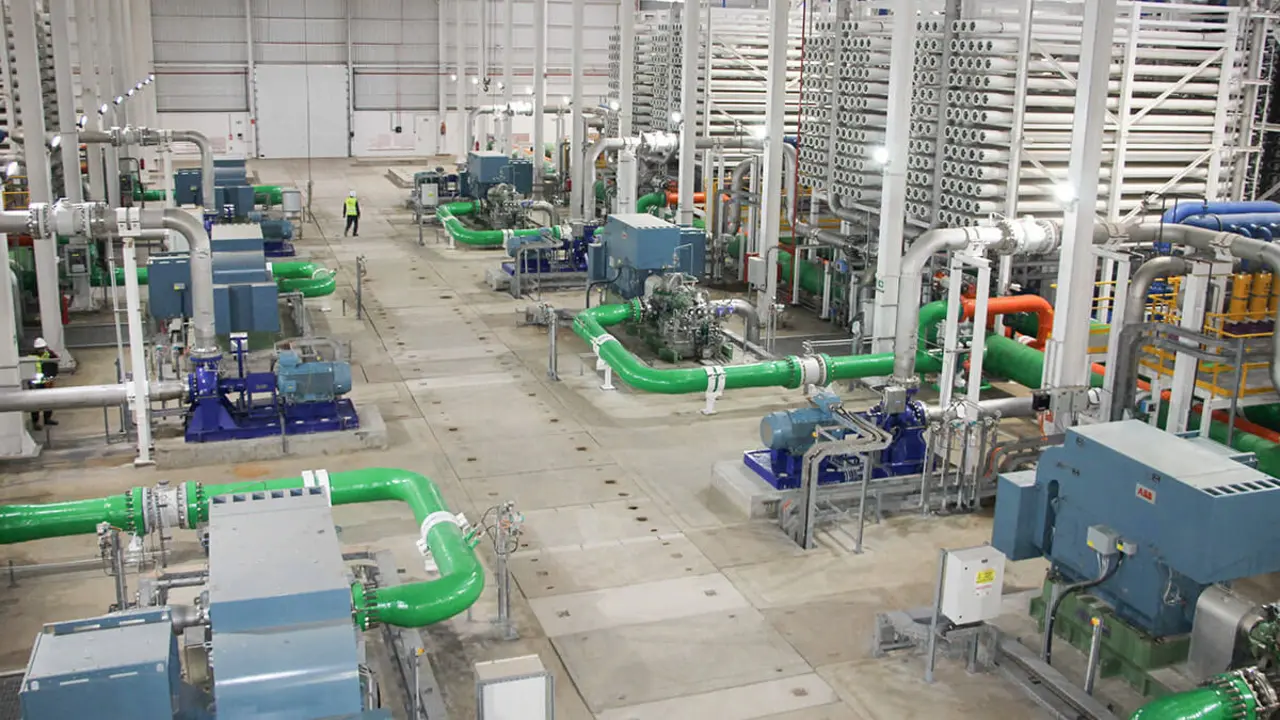Countries unable to bend the emissions curve: CO2 and methane hit record highs

Two reports by the UN agency show the two sides of the coin of greenhouse gases causing climate change. The obverse side is carbon and methane concentrations, which again hit an all-time high in 2021. The flip side is the inability of countries to reduce them sufficiently to avoid the most catastrophic effects of the climate crisis.
The report published by the Secretariat of the Framework Convention on Climate Change, also known as the UN Framework Convention on Climate Change (UNFCCC), indicates that countries are generally starting to bend down the curve of projected future global greenhouse gas emissions, but without yet achieving a real reduction.
For this reason, the document stresses that such efforts are still insufficient to limit the increase in global temperature to 1.5 degrees Celsius by the end of the century, as agreed in the Country Agreement and the limit for the impact of global warming to be as small as possible.
In fact, according to data from this UN agency, the combined climate commitments of the 193 states that signed the Paris Agreement are putting the planet on track for the Earth's average temperature to be about 2.5 degrees Celsius by the end of the century, an increase that will bring catastrophic consequences for life on Earth, according to scientists at the Intergovernmental Panel on Climate Change (IPCC).

In 2019, that Panel indicated that to curb global warming CO2 emissions needed to be reduced by 43% by 2030 compared to 2010 levels, but current climate plans instead show an increase of 10.6%.
However, this is an improvement on last year's report, which showed a 13.7% increase by 2030, and a continued rise in emissions after 2030.
"The downward trend in projected emissions by 2030 shows that countries have made some progress this year," said Simon Stiell, executive secretary of the UN Climate Change Agency.
"But the science is clear and so are our climate targets under the Paris Agreement. We are still nowhere near the scale and pace of emissions reductions needed to put us on track for a 1.5-degree Celsius world," he warned.
Stiell stressed that national governments must without fail strengthen their climate action plans now and implement them over the next eight years.
Last year, during the UN Climate Change Conference, COP26, held in Glasgow, Scotland, all countries agreed to review and strengthen their climate plans; however, only 24 of the 193 nations have submitted updated plans to the UN.
"This is disappointing. Decisions and actions by governments must reflect the level of urgency, the severity of the threats we face and the short time left to avoid the devastating consequences of runaway climate change," said the head of the climate change agency.
The good news is that most of the nations that submitted a new plan strengthened their commitments, demonstrating greater ambition in tackling climate change, according to the agency, which saw this as a "glimmer of hope".
A separate UN climate change assessment, released on Wednesday, found more positive trends in long-term strategies to achieve net zero emissions.
A total of 62 countries, representing 93% of world GDP, 47% of the global population and about 69% of total energy consumption, have such plans in place.
"This is a clear signal that the world is starting to aim for net zero emissions," the agency said.
However, experts point out that many net zero emissions targets remain uncertain and postpone critical actions that need to be taken now to the future.

While countries continue to delay their plans, the laws of physics and chemistry continue to do their work, oblivious to politics, and in another report, the World Meteorological Organization (WMO) confirms the upward trend in atmospheric levels of the three main greenhouse gases that warm our planet, carbon dioxide, methane and nitrous oxide, reached new record highs in 2021.
Moreover, the agency's annual Greenhouse Gas Bulletin warns of the largest year-on-year jump in methane concentrations in 2021 since systematic measurements began nearly 40 years ago.
Although the reason for this exceptional increase is not yet clear, it appears to be the result of both biological and human-induced processes.
Moreover, the increase in carbon dioxide levels from 2020 to 2021 was also higher than the average annual growth rate of the last decade and levels will continue to rise until 2022.
Against this backdrop, WMO Secretary-General Professor Petteri Taalas said the report "highlights, once again, the enormous challenge and the vital need for urgent action to reduce greenhouse gas emissions and prevent global temperatures from rising further in the future".
The report explains that between 1990 and 2021, the warming effect of long-lived greenhouse gases (those that remain in the atmosphere the longest) on our climate has increased by almost 50%, driven mainly by increases in CO2.
CO2 concentrations last year reached 415.7 parts per million (ppm), methane 1,908 ppm and nitrous oxide 334.5 ppm.
These values constitute, respectively, 149%, 262% and 124% of pre-industrial levels before human activities began to alter the natural balance of these gases in the atmosphere.
"The continued rise in concentrations of the major heat-trapping gases, including the record acceleration of methane levels, shows that we are heading in the wrong direction," Taalas stressed.
The WMO warns that as long as emissions continue, global temperatures will continue to rise. Given the long lifetime of CO2 in the atmosphere, the temperature level already observed will persist for decades, even if emissions are rapidly reduced to so-called net zero.
The scientists point out that it is also important to understand that this report measures greenhouse gas concentrations, i.e. what is left in the atmosphere after gases are absorbed by sinks such as the ocean and biosphere, which is not the same as emissions.
The Bulletin explains that, following the closure of COVID in 2020, global CO2 emissions have rebounded, mainly from the production of fossil fuels and cement.
Of the total emissions from human activities during the period 2011-2020, about 48% accumulated in the atmosphere, 26% in the ocean and 29% on land.
Experts warn that there are concerns that the ability of terrestrial ecosystems and oceans to act as sinks may become less effective in the future, reducing their capacity to absorb carbon dioxide and act as a buffer against further temperature increases. In some parts of the world, land that previously absorbed carbon has begun to emit the gas back into the atmosphere.

Methane is the second largest contributor to climate change and consists of a diverse mix of overlapping sources and sinks, making it difficult to quantify emissions by source type, scientists explain.
Since 2007, the global concentration of methane has increased at an accelerating rate. The annual increases in 2020 and 2021 are the largest since systematic recording began in 1983.
However, scientists do not yet know what is causing this increase, but some research indicates that a large amount of this methane is coming from "biogenic sources", such as wetlands and rice paddies.
One possibility being explored by the Bulletin is the so-called "climate feedback", which means that as it warms, organic matter decomposes faster in tropical wetlands, increasing the number of emissions.
Finally, nitrous oxide is emitted to the atmosphere from both natural sources (57%) and anthropogenic sources (about 43%), including oceans, soils, biomass burning, fertiliser use and various industrial processes.
The increase from 2020 to 2021 was slightly higher than that observed from 2019 to 2020, and higher than the average annual growth rate over the past 10 years.
WMO is currently working to develop a framework for sustained and internationally coordinated global monitoring of greenhouse gases.

In less than two weeks, the UN Climate Change Conference COP27 will be held in Sharm el-Sheikh, Egypt, and both Stiell and Taalas called on governments to review their climate plans and strengthen them to close the gap between where emissions are heading and where the science says they should be this decade.
"COP27 is the moment when world leaders can regain momentum on climate change, make the necessary shift from negotiations to implementation and set in motion the massive transformation that must occur in all sectors of society to address the climate emergency," said Stiell.
The UN Climate Change Agency secretary-general urged governments to show at the conference how they will implement the Paris Agreement through legislation, policies and programmes, as well as how they will cooperate and provide support for implementation.
He also called on countries to make progress in four priority areas: mitigation, adaptation, loss and damage, and finance.
For the head of the World Meteorological Organisation, the science underscores "the importance of implementing without delay the cost-effective strategies already available to address methane emissions, as well as drastically reducing CO2 by transforming our industrial, energy and transport systems".
"The necessary changes are economically affordable and technically possible. Time is running out," he reiterated.
The World Meteorological Organization hopes that the science included in this Bulletin, and the State of the World's Climate report to be released on the eve of the UN Climate Conference (COP27) in Egypt, will help push negotiators to take more ambitious action to achieve the Paris Agreement's goal of preferably limiting global warming to 1.5 degrees Celsius.








